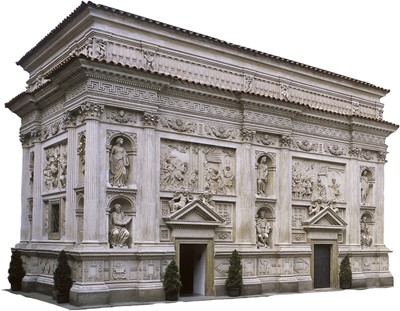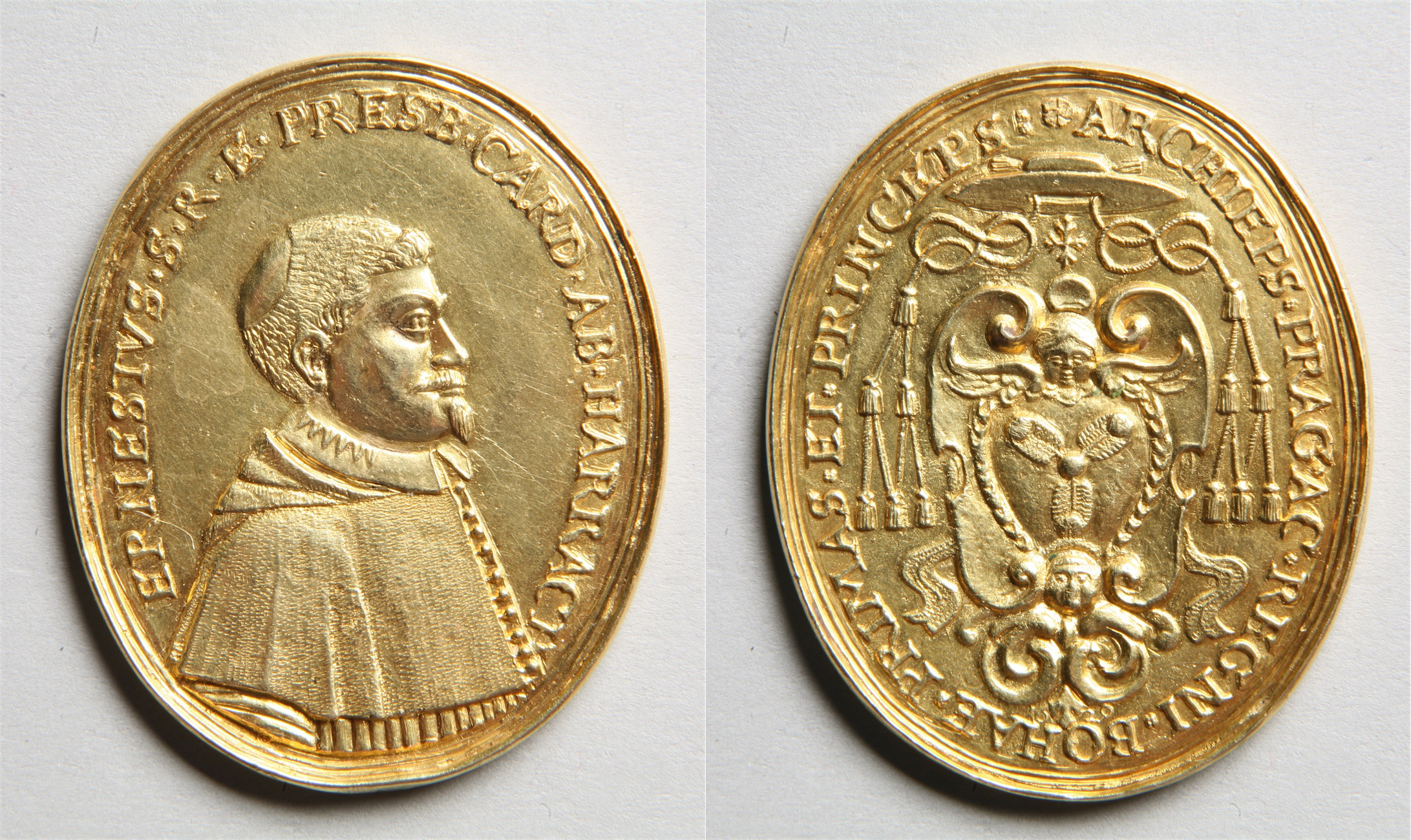
What is Loreto in the truest sense of the word? The whole Sanctuary? No, only few people know that the genuine Loreto - the Holy House chapel or Santa Casa - is the small decorated chapel in the middle of the cloister. The conceptual and actual centre of the complex is the vera effigies, the ‘true form’, of the Italian model (in the Baroque account, the ‘sacrum’ of a cult object was transferred through its external form). The history of the entire pilgrimage site began with the laying of the foundation stone of the house on 3 June 1626.

The first patron and founder was Benigna Katharine von Lobkowitz; she chose an Italian in Vienna, G. B. Orsi (died 1641) as the architect of the Casa. The Prague Archbishop, Cardinal Ernst Adalbert Count von Harrach, consecrated the Chapel on 25 March 1631.

Originally, the outer walls of the house were decorated only with paintings; it was not until the 1660s and 1670s that the relief panelling of the walls in stucco, made, for the most part, by the Italian G. B. Cometa (1620-1687), was built at the expense of Countess Elizabeth Apollonia Kolowrat. The iconographic program of the decoration (consistently derived from the Italian model) includes reliefs from the life of the Virgin Mary, with an emphasis on the childhood of Christ (the cycle begins on the northern side, turned towards the Chapel of St Francis, and continues counter-clockwise): northern wall - the Nativity of Our Lady, the Betrothal of Our Lady; western wall - the Annunciation, the Virgin Mary visiting St Elizabeth and the Holy Family at the registry in Bethlehem; southern wall - the Nativity of Our Lord, the Adoration of the Shepherds and the Adoration of the Magi; eastern wall - the Death of Our Lady and the Translation of the Holy House from Nazareth to Europe. The relief bays are separated by niches with sculptures of the Old Testament prophets (in the lower storey) and the pagan Sibyls (in the upper storey) - that is, those who foretold the birth of Jesus and the Virgin Mary.

The interior is pided into two parts in a traditional manner by a silver (partly wooden) grille partition, with an altar in front. In the smaller space the wonder-working statue of Our Lady of Loreto is situated; made of linden wood, it copies the no-longer extant original made of cedar wood, including the darkening of the original material in the incarnadine parts. The sculpture rests in a rich, wrought silver frame from 1671, with the coat-of-arms of the donor, Countess Elizabeth Apollonia Kolowrat, née Tilly. Most of the objects in the Santa Casa (the reliquaries, obelisks, candlesticks, lamps and liturgical instruments) date from the 17th century. F. Kunz made the artificial fragments of frescoes on the rustic brick masonry of the house.

V. The Angel of the Lord declared unto Mary,
R. And she conceived of the Holy Spirit. Hail Mary, etc.
V. Behold the handmaid of the Lord,
R. Be it done unto me according to your word. Hail Mary, etc.
V. And the Word was made flesh,
R. And dwelt among us. Hail Mary, etc.
V. Pray for us, O holy Mother of God,
R. That we may be made worthy of the promises of Christ.
Let us pray: Pour forth, we beg you, O Lord, your grace into our hearts: that we, to whom the incarnation of Christ your Son was made known by the
message of an angel, may by his passion and Cross be brought to the glory of his resurrection. Through the same Christ our Lord.
Amen.
